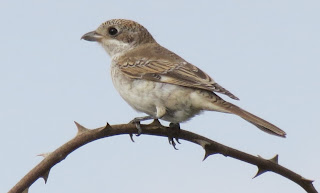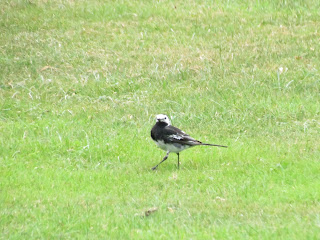A very quick response on my adult Lesser Black-backed Gull at Shardeloes Lake...
Ringing Details below _;
Heringsmöwe Larus
fuscus
Ring-Nr. : Helgoland 4305061 Farbring: H851
Beringungsdaten: 12.07.2009 Helgoland / Düne 54 o 11 ' N 7 o 55 ' E
nicht
flügge Gruppengröße :
bisherige Wiederfunde
Datum Beobachtungsort Koordinaten (in Grad u.
Min.) Finder
23.07.2009 Helgoland
/ Düne 54 11 N 7 55 E Farbring abgelesen Wischniewski
01.08.2009 Helgoland
/ Düne 54 11 N 7 55 E Farbring abgelesen Wischniewski
07.08.2009 Helgoland
/ Düne 54 11 N 7 55 E Farbring abgelesen Dierschke, J.
22.11.2009 ESP
- Madrid, Colmenar Viejo 40 39 N -3 43 E Farbring
abgelesen Gonzalez
16.12.2009 ESP
- Madrid, Pinto 40 15 N -3 42 E Farbring abgelesen Marchamalo
05.01.2010 ESP
- Madrid, Colmenar Viejo 40 39 N -3 43 E Farbring
abgelesen Juan
02.05.2010 ESP
- Madrid, Pinto 40 15 N -3 42 E Farbring abgelesen Gonzalez
08.05.2010 ESP
- Madrid, Pinto 40 15 N -3 42 E Farbring abgelesen Ruiz
27.09.2010 GB
- Surrey, Badshot Lea 51 14 N 0 45 E Farbring
abgelesen Duncan
07.10.2010 GB
- Gloucester, Bishop`s Cleeve 51 56 N -2 5 E Farbring abgelesen Sanders
11.10.2010 ESP
- Coruna-Provinz, Valdovino 43 38 N -8 7 E Farbring abgelesen Gutierrez
03.06.2011 Helgoland
/ Düne 54 11 N 7 55 E Farbring abgelesen Jachmann
11.07.2011 Helgoland
/ Düne 54 11 N 7 55 E Farbring abgelesen Dierschke, V.
20.01.2012 ESP
- Madrid, Pinto 40 15 N -3 42 E Farbring abgelesen Marchamalo
25.01.2012 ESP
- Madrid, Manzanares River 40 24 N -3 43 E Farbring abgelesen Fernandez
03.05.2012 Helgoland
/ Düne 54 11 N 7 55 E Farbring abgelesen Krug
03.05.2013 GB
- Buckinghamshire, Marlow 51 34 N 0 47 E Farbring
abgelesen Rose
22.08.2013 GB
- Buckinghamshire, Amersham 51 40 N 0 37 E Farbring abgelesen Evans


















































